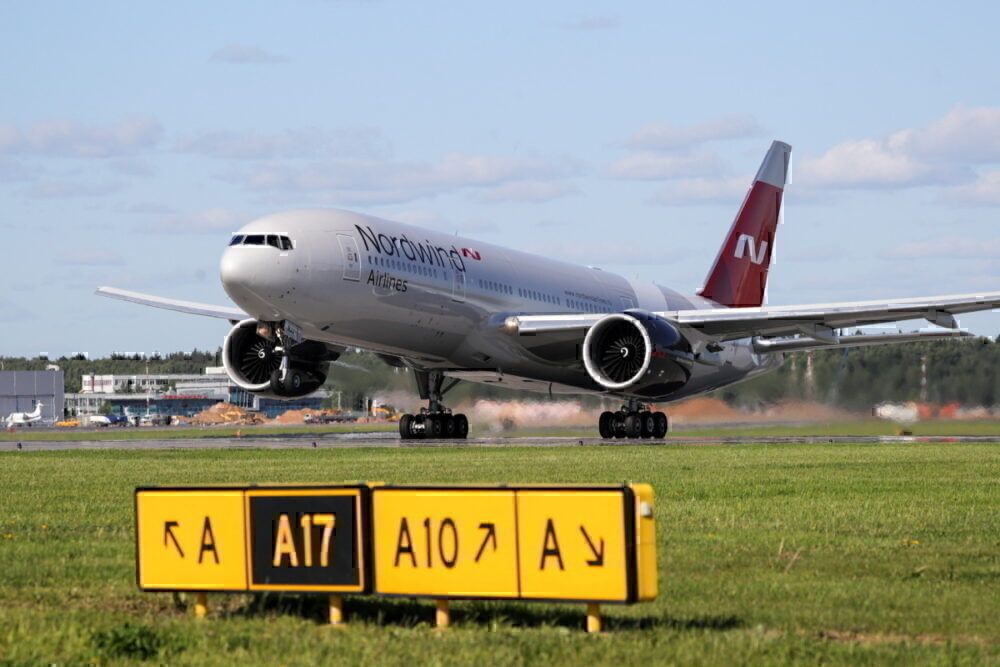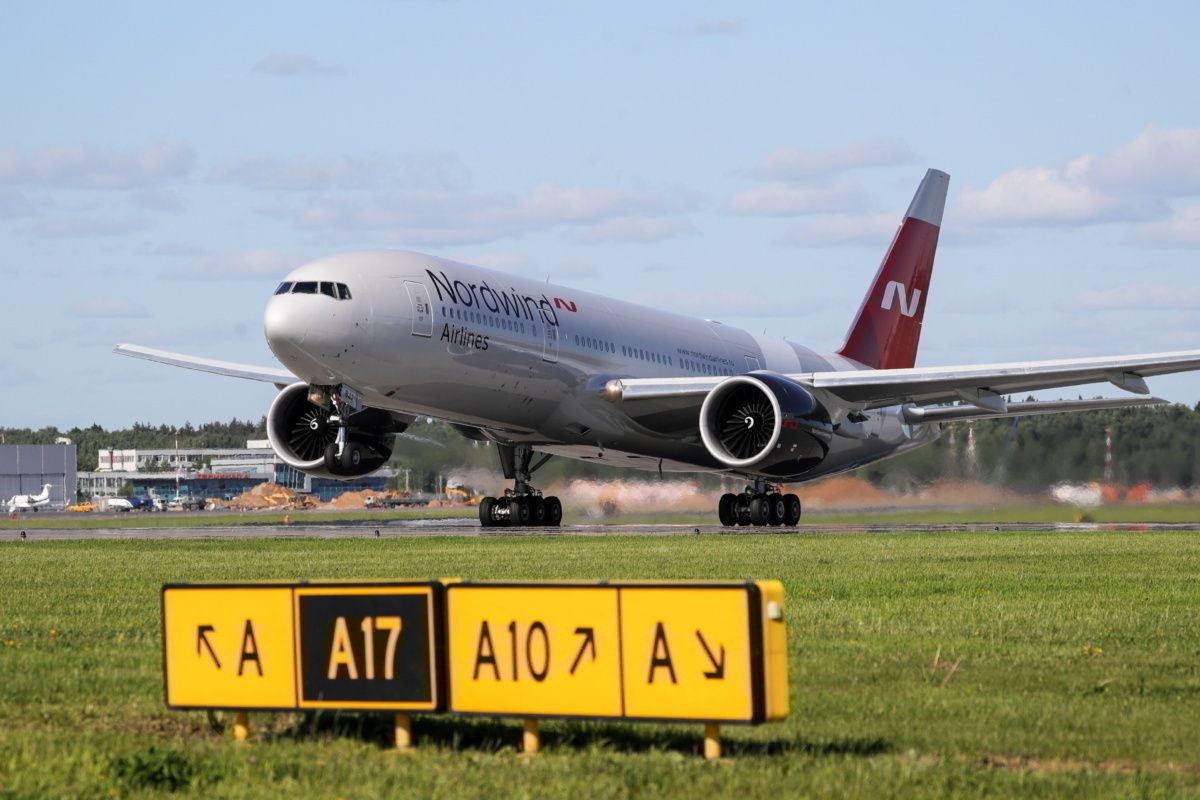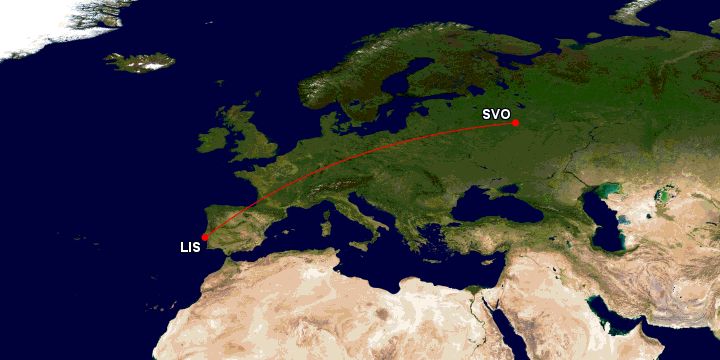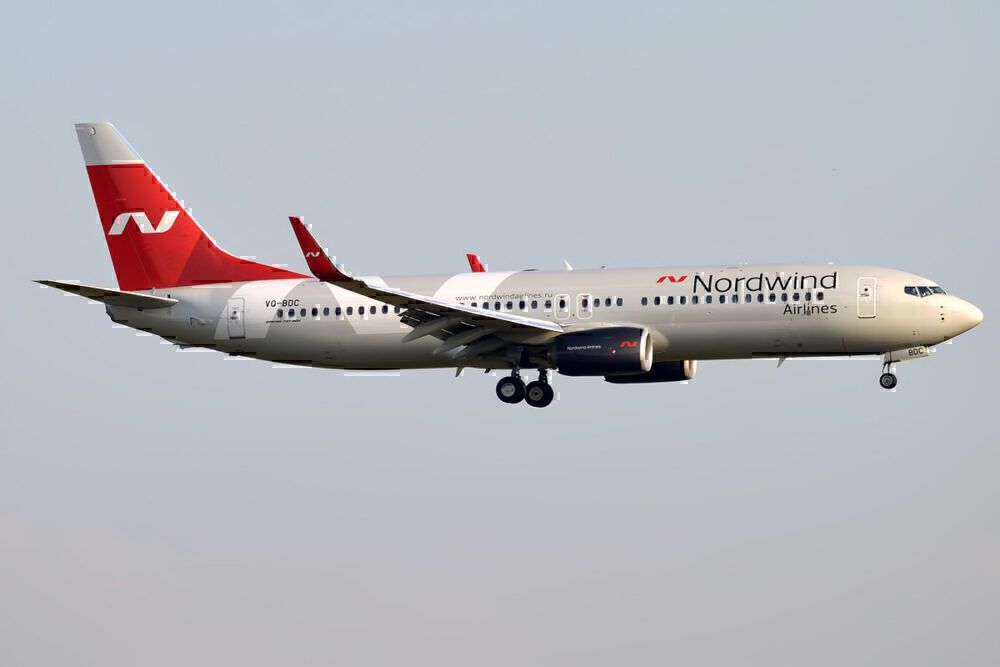Earlier this week, a Nordwind Airlines Boeing 777 traveled to Moscow by flying at just 10,000 feet after it failed to pressurize. On 15th May, the aircraft suffered an emergency slide inflation that damaged the door at Lisbon Airport. Subsequently, the plane was not able to manage pressure in the cabin but continued its flight to Moscow despite the incident.
What happened?
On 15th May, flight number NWS9902, operated by Russian leisure airline Nordwind Airlines, left Lisbon Airport (LIS) for Sheremetyevo International Airport (SVO) in Moscow. The Boeing 777-200ER, however, had its emergency evacuation slide inflated at Lisbon Airport. Therefore, the issue resulted in damage to the door of the aircraft. A video detailing the damage was released online and can be viewed here.
Rather than halting take-off, it appears that crews made the decision to fly low but continue between Lisbon and Moscow. Aircraft VQ-BJA was calibrated to operate at 10,000 feet, according to FlightRadar24. This move was presumably done to maintain comfort and safety in the cabin.
Currently, Nordwind has not released information about any issues with passengers or employees on board, so it is thought that all travelers arrived safe and well.
As for the incident itself, the details remain unclear. Why was the evacuation slide inflated? Also, did the crew know about damage to the door before the flight took off? We contacted Nordwind Airlines to find out more, but it was unavailable for comment at the time of publication. We will update this article as we hear from the airline.
Aircraft pressurization and the dangers
Maintaining cabin air pressure is essential for ensuring passenger safety and comfort. Humans thrive at sea-level altitudes due to the oxygen density in the air. Flying is in direct opposition to this basic necessity. The higher an aircraft flies, the thinner the air gets. Therefore, it becomes harder to breathe.
Aircraft pressurization systems are vital. Ultimately, they work by compressing outside air and keeping the pressure at a comfortable level. The engines pressurize to air, and outflow valves control it. If higher pressure is needed in the cabin, these small doors close. If less pressure is required, the outflow valves open more. Few passengers are aware of these intricate systems keeping them safe on board. However, without them, it would be a different story.
Keeping air pressure consistent reduces the chance of headaches and nosebleeds caused by excess pressure in the head. Thankfully, by staying at an altitude of 10,000 feet above sea level, Nordwind Airlines was able to mitigate the damaging effects of high altitude.
Who is Nordwind Airlines?
Nordwind Airlines is a Russian leisure carrier founded in 2008. It has its hub in Sheremetyevo International Airport, where it operates 32 aircraft. Altogether, it has a fleet of Airbus A321 and A330 aircraft, as well as Boeing 737, 777-200ERs, and 777-300ERs.
Pegas Touristik, a travel agency in Russia, owns the airline. Additionally, Nordwind Airlines has a subsidiary airline called Pegas Fly, which operates in Russia and China with charter flights to Europe, Africa, and Asia.Â
Let us know your thoughts on this story in the comments.Â



